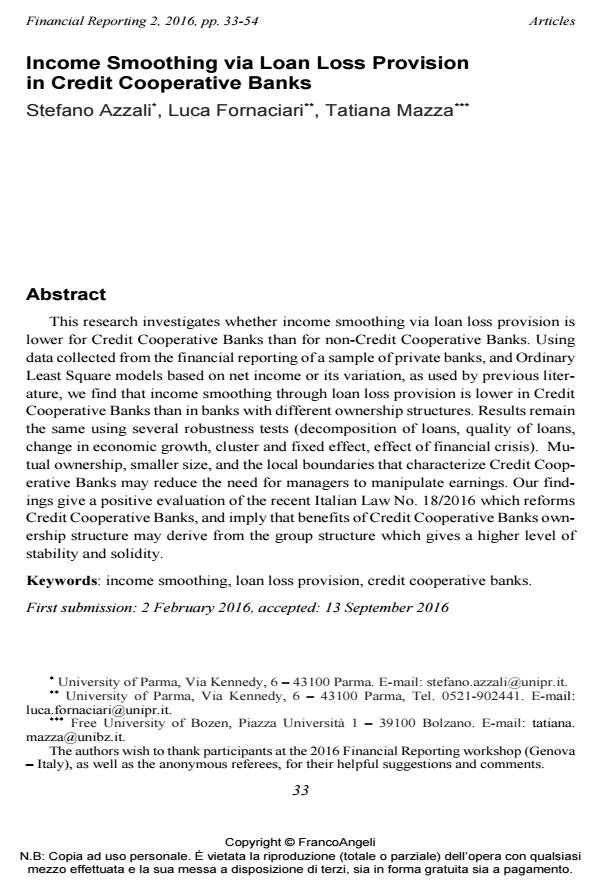Income Smoothing via Loan Loss Provision in Credit Cooperative Banks
Journal title FINANCIAL REPORTING
Author/s Stefano Azzali, Luca Fornaciari, Tatiana Mazza
Publishing Year 2017 Issue 2016/2
Language English Pages 22 P. 33-54 File size 252 KB
DOI 10.3280/FR2016-002002
DOI is like a bar code for intellectual property: to have more infomation
click here
Below, you can see the article first page
If you want to buy this article in PDF format, you can do it, following the instructions to buy download credits

FrancoAngeli is member of Publishers International Linking Association, Inc (PILA), a not-for-profit association which run the CrossRef service enabling links to and from online scholarly content.
This research investigates whether income smoothing via loan loss provision is lower for Credit Cooperative Banks than for non-Credit Cooperative Banks. Using data collected from the financial reporting of a sample of private banks, and Ordinary Least Square models based on net income or its variation, as used by previous literature, we find that income smoothing through loan loss provision is lower in Credit Cooperative Banks than in banks with different ownership structures. Results remain the same using several robustness tests (decomposition of loans, quality of loans, change in economic growth, cluster and fixed effect, effect of financial crisis). Mutual ownership, smaller size, and the local boundaries that characterize Credit Cooperative Banks may reduce the need for managers to manipulate earnings. Our findings give a positive evaluation of the recent Italian Law No. 18/2016 which reforms Credit Cooperative Banks, and imply that benefits of Credit Cooperative Banks ownership structure may derive from the group structure which gives a higher level of stability and solidity.
Keywords: Income smoothing, loan loss provision, credit cooperative banks
- What drives discretionary loan loss provisions? The role of banks' business model, listing status and COVID-19 crisis in the European banking sector Alessandra Allini, Fiorenza Meucci, Flavio Spagnuolo, Annamaria Zampella, in FINANCIAL REPORTING 2/2023 pp.71
DOI: 10.3280/FR2023-002003
Stefano Azzali, Luca Fornaciari, Tatiana Mazza, Income Smoothing via Loan Loss Provision in Credit Cooperative Banks in "FINANCIAL REPORTING" 2/2016, pp 33-54, DOI: 10.3280/FR2016-002002